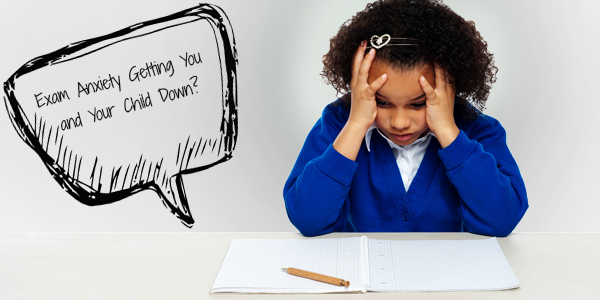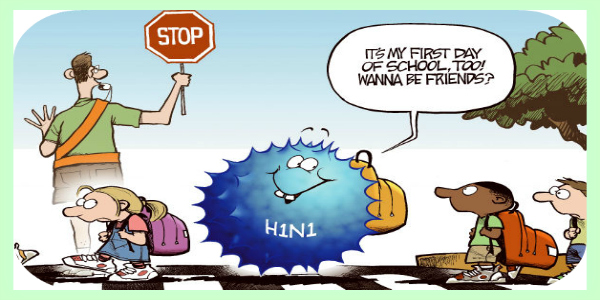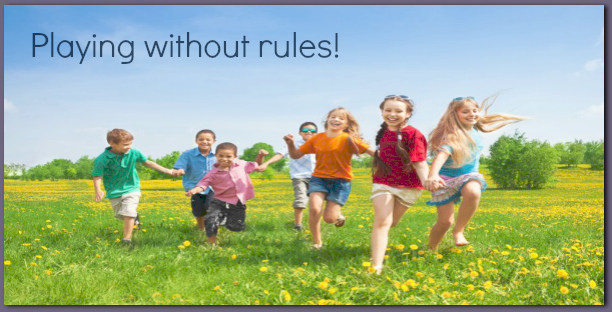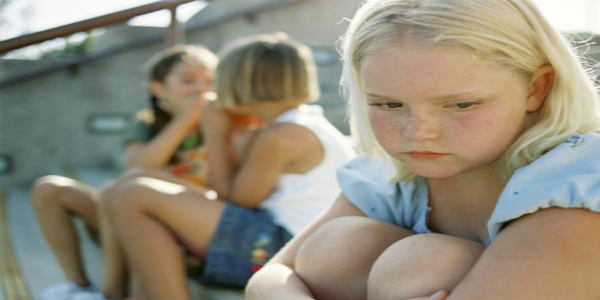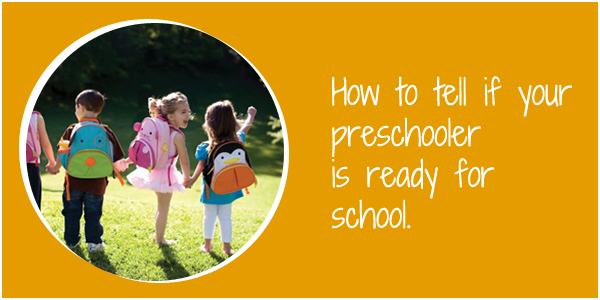With exam time around the corner, it is time to knuckle down and concentrate for children. And yet, we find that many of them are not able to put their best foot forward when it is actually their time to shine. Studies conducted on 100 school children by Indiaparenting suggest that 76% of them actually under-performed during exam time. Whereas their actual potential ranked much higher than their grades in exams. [Read more…]
Celebrating a Safe yet Fun-Filled Holi with Children
The festival of Holi has always been a no-holds-barred event where fun and revelry are a part of the game. For you and your children to be able to celebrate this festival in a safe way, here are a few do’s and don’ts. [Read more…]
Sensible and Simple Swine Flu Precautions for you and your Children
Most schools and households are already taking precautionary measures against contracting swine flu. We even receive messages on how to prevent and take care to guard against swine flu. However, here’s an article that will separate facts from the myths surrounding Swine Flu. [Read more…]
Bringing your new born home; what to expect the first week
Fresh out of labor or a C Section can leave you a complex mix of social, psychological and physical changes. Your hormones are all over the place, and you might not be feeling or living the same life you imagined when the baby was unborn.
However, it helps when you know what to expect those few days when you arrive home with your bundle of joy that will make your life memorable, no matter what you feel now. [Read more…]
Hidden Toxins Inside Children’s School Supplies
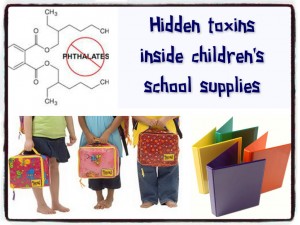 Many parents are aware of the dangers of phthalates in cosmetic products. However, phthalates are used in children’s products as well. Did you know that children are exposed to dangerous chemicals found in their backpacks and other school items?
Many parents are aware of the dangers of phthalates in cosmetic products. However, phthalates are used in children’s products as well. Did you know that children are exposed to dangerous chemicals found in their backpacks and other school items?
Phthalates are a class of chemicals, such as DEHP, DINP, DBP and DEP. They are used as softeners in PVC, vinyl products to make them soft and more flexible. You will find these chemicals in flexible toys, food packagings, shower curtains, building materials (pipes), and medical devices. Phthalates are dangerous even at low levels of exposure. They are hormone disruptors and are linked to cancer and asthma, AD(H)D, early puberty and birth defects. While phthalates have been restricted or banned in toys in many countries, protection from these dangerous chemicals does not exist for children’s school supplies. I’m deeply concerned that our children are still exposed to these chemicals!
Children are more vulnerable to toxic chemicals than adults. In their developing little bodies a small exposure to toxins translates into a big dose. They put things in their mouths and ingest chemicals from toys, plastic containers, and even dirt and dust on a daily basis.
In 2012, an American study investigated the presence of phthalates in children’s school supplies, such as backpacks, lunch boxes, ring binders and rain wear. They found that the items tested contained levels of phthalates that would be in violation of the ban for toys, if these products were considered toys. They also found that the school supplies contained more than one phthalate, clearly indicating that our children are exposed to multiple phthalates in their school supplies. Additionally, the study found that apart from phthalates, children’s PVC school supplies also contained heavy metals, such as lead, mercury, cadmium and chromium.
Many PVC backpacks and lunchboxes contain levels of phthalates that are 40-50 times higher than the limit set for toys. As school supplies are not classed as toys, companies are able to get away with adding these hazardous, toxic chemicals to their products.
PVC backpacks, ring binders, lunch boxes, raincoats, umbrellas and wellies contain excessively high levels of phthalates and our children are exposed to elevated levels of these toxic substances by using these school supplies.
Follow these easy steps to reduce your children’s exposure to phthalates:
- Avoid school supplies made with “vinyl” or “PVC”! Unfortunately some products are not properly labeled, making it difficult to determine whether they contain vinyl. Phthalates are used to soften PVC. Try to buy PVC free school supply. To identify vinyl packaging, first look for the universal recycling symbol. If it has the number “3” inside it, or the letters “V” or “PVC” underneath it, you know the product is made out of PVC and is likely to contain these chemicals.
- Do a “Sniff Test.” That “plastic” smell from plastic toys, backpacks, ring binders, raincoats, umbrellas and other plastic products usually comes from phthalates.
- Try canvas backpacks, stainless steel lunch boxes, cloth covered binders and PVC-free rain coats and boots.
- Ditch the PVC altogether if you can!
To download more information on the lab report, visit: http://chej.org/wp-content/uploads/HiddenHazardsReportFINAL.pdf
Re-published with permission from the blog of ParentEdge, a bi-monthly parenting magazine that aims to expose parents to global trends in learning and partner with them in the intellectual enrichment of their children. This blog was written by Aniko Sziraczki is a Kinesiologist with a background in Psychology, and the founder of Raising Toxin Free Children.
Playing without rules: If kids are left to their own devices
Last week, I decided to conduct a small experiment with my 7 year old son. Little did I know at that time, how it would all pan out for both of us. I was continually stressed with not being able to manage my time more effectively due to increasing work pressure and my son was getting too much screen time thanks to that. So, last Friday, I asked him to go out and play and not return until dinner time. Mentally I made a note to check on him after an hour or so, that is if he didn’t show up before that. [Read more…]
Inclusive Education: Integrating Special Needs Children within Mainstream Schools
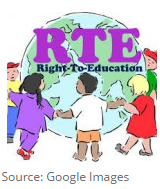 I have been asked this question many times. Sometimes by people who were well meaning and a lot of times by those who were not. People have asked me this under the guise of concern and curiosity but I was always able to gauge what they really wanted to know. My fellow teachers in my school were extremely unhappy when the ‘Right to Education’ made it mandatory for them to have children with special needs in their classrooms. They used to complain about the extra burden, lack of facilities and infrastructure and for not being trained to handle children with special needs. I used to tell them to forget about all that and just accept. Acceptance paves the way for a lot of problems and solutions can be found within its realm. It was not just fellow teachers; there were parents too who thought having special needs children in the class would affect their children’s behaviour and ‘these’ kids should go and study in special schools.
I have been asked this question many times. Sometimes by people who were well meaning and a lot of times by those who were not. People have asked me this under the guise of concern and curiosity but I was always able to gauge what they really wanted to know. My fellow teachers in my school were extremely unhappy when the ‘Right to Education’ made it mandatory for them to have children with special needs in their classrooms. They used to complain about the extra burden, lack of facilities and infrastructure and for not being trained to handle children with special needs. I used to tell them to forget about all that and just accept. Acceptance paves the way for a lot of problems and solutions can be found within its realm. It was not just fellow teachers; there were parents too who thought having special needs children in the class would affect their children’s behaviour and ‘these’ kids should go and study in special schools.
One of the common misconceptions was and still is that children with special needs are not educable and it is a time wasting exercise to put effort into teaching them. I believe this is a very dangerous thought for teachers to have, because if you are not convinced yourself, then the chances are you’d never be able to fully support the inclusion.
Now back to the question, why do parents want to put their special needs children into mainstream schools? The answer is not one dimensional and frankly, many special needs parents have not had the best experience with inclusion. Many of them home-school their children based on their unpleasant experiences with the school system but other optimistic parents still send or want to send their kids to school. Let me be clear, academics is the last thing we have in our mind. So what makes this decision for us?
It is our RIGHT: Yes, the children with special needs are as much a part of the society as other children are. It is their right to be treated in the same way. Just like all the children going to the school are not alike and have varied abilities and skills, the same applies to our little special brigade as well. They all come with their own skills, strengths and challenges and it is their right to get the same treatment that their ‘neuro-typical’ counterparts do.
Research suggests it is for the best: Inclusion is a natural extension of the philosophy that embraces diversity and celebrates individual differences. The advantages of inclusion in the classroom by mixing in students with special needs, regardless of the severity of a student’s disability or socio-economic status, have been well documented, whereas special needs kids who remain in segregated classes fall academically and socially further behind. One area in which children who enjoy inclusive education show long-term benefits is in their social-emotional development. The bottom line is that “regular, sustained interaction” in inclusive classrooms offers children with disabilities opportunities to observe, develop, expand, and generalize their social skills (Strain, McGee, & Kohler, 2001, p. 357). One research study concluded that children with social and communication delays show “marked developmental progress on intellectual and language measures” in comparison to their counterparts segregated from typically developing peers (Strain & Bovey, 2011,p. 134).
We parents want it: In an ideal world where educators would be well trained and accepting, resources would be plenty and nobody would treat our children differently; no parent would home school or send the children to so called special schools. But even in this less than ideal world I want my child to be a part of the society she has to live in all her life and to equip her to deal with the challenges rather than keeping her in a cocoon. My daughter, who has Down’s Syndrome, goes to a mainstream school with her brother and I can’t begin to describe the feeling when I wave them both goodbye in the morning. I have always wanted them to feel equal and get equal opportunities, and inclusion seems a good way for doing that!
It helps ‘typical’ children: There is strong evidence of the positive effects of inclusive education on students who do not have disabilities. “Both research and anecdotal data have shown that typical learners have demonstrated a greater acceptance and valuing of individual differences, enhanced self-esteem, a genuine capacity for friendship, and the acquisition of new skills,” according to Long-Term Effects of Inclusion, from the ERIC Clearing House on Disabilities and Gifted Education.
“Inclusion improves learning for both typical and special need students. When youngsters who have learning problems are included, students without disabilities often do better academically. A teacher is more apt to break instruction into finer parts or repeat directions if he or she has a youngster in the room who deals with deafness, blindness, or a developmental disability. Also when children are exposed to inclusion at an early age and consistently throughout their lives, they are more likely to approach children with disabilities with acceptance (Rafferty et al., 2001) and are less likely to view a disability as an impairment.” – Education World, ‘Special Education Inclusion’
It is the law: Yes, it is the law and not abiding by it is an offense. It is important for everybody to know that the RTE (Right to Education) Act was passed in 2009 and it is against the law to discriminate against special needs children and deny them admission. It is the responsibility of the schools to hire special educators and have the necessary infrastructure for the inclusion. It is true that many schools still don’t care, but some do.
The Autistic Self Advocacy Network says, “How children are treated in schools often mirrors how they will be treated in later life…A society that separates its children [during their school years] is likely to maintain those separations indefinitely, reinforcing attitudinal barriers to disability in all aspects of life.”
Inclusion is still a dream for many parents. We look forward to the day when it will not be a struggle or a fight to put our children into a mainstream school. The day when a child will be treated with respect, dignity and care irrespective of his disability and when the school, parents and the teachers would promise to do the same – that is when the true inclusion takes place.
Re-published with permission from the blog of ParentEdge, a bi-monthly parenting magazine that aims to expose parents to global trends in learning and partner with them in the intellectual enrichment of their children. This blog was written by Deepa Garwa A teacher by profession and a writer by choice, Deepa Garwa is an opinionated blogger, a self advocate on disabilities and a parenting enthusiast. She believes that by thinking out of the box parents can help their children reach their best. A mother of two, (a soccer crazy son and a special needs daughter), Deepa writes about her parenting experiences on www.twominuteparenting.com.
Parenting the Shy Child; Are you creating labels for your child to live by?
Picture this; on your way back from your child’s school, you meet a neighbor in the parking lot. Your neighbor makes friendly attempt at engaging in a conversation with your child, maybe even initiating a physical contact. Your child doesn’t respond, is looks visibly withdrawn and hides behind your legs to shield him from this sudden onslaught of questions that demand answers. Your neighbor just coos, “Oh he’s being shy, how sweet!” There! A label created, damage done.
Let me explain. Every child is born with a unique personality. Some like to sit back and observe rather than plunge head on into things. Others talk nineteen to the dozen and try out new things without any kind of orientation. While the basic reason why your child behaves the way he does has got a lot to do with his genetic make-up, we in the adult world, create labels like shy, a bully, cute, etc to explain away why our children behave the way they do. But there are 2 major problems in doing this.
Firstly, you are setting up excuses for the way your child is behaving and this only reinforces him to continue behaving in the same way. In his little world, if adults say that he is being shy, he must be, right?
Secondly, it puts a so-called shy child under enormous pressure to respond to the communication in the way it is expected, no matter what how or what own feelings are.
How can you help a child in this situation?
- Understand that Toddler Shyness could be a development trait due to lack of social skills.
- Most shy kids are well adjusted and can very well work around stressful situations on their won, if left alone. Don’t shower him with attention if would rather be left alone.
- You can boost your child’s self esteem and social skills by preparing him for stressful situations in advance. If there is a birthday party coming up, have a mock party at home and play out parts where he gets a chance to interact with his friends.
- When people try to label your child “shy” tell them “No she isn’t shy, she just isn’t being very talkative”. That way you are not letting your child believe that he is forever going to be shy.
- Refrain from rescuing your child from situations like the one stated above. Don’t coax an answer out him. Just continue your conversation and trust that your child will join in when ready.
- Use family meetings and gatherings to get your child to come out of his comfort zone. In such a situation he feels safe to explore and has more chances of discovering the joys of participation.
- Expose your child to as many social situations as is possible. But be careful not to put any pressure on him to perform according to the rules of adults, just then.
How to tell if your preschooler is ready for school
That every child develops at a different rate is established. Normally preschools start accepting children at 2 ½ years of age. But just because a child has crossed 2 ½ years of age doesn’t mean he is magically ready for preschool. There are a lot of things to ensure your child receives full benefit of attending a pre-school or worse doesn’t actually regress in certain areas. [Read more…]
Child Safety and Indoor health hazards that is easy to overlook
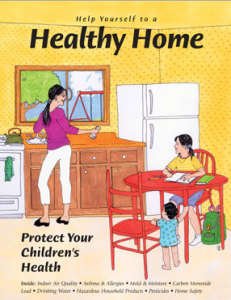 If your child has frequent bouts of allergies and colds, the culprit could be hiding right at home under the guise of mold, animal dander, dust mites and chemicals found in everyday products.
If your child has frequent bouts of allergies and colds, the culprit could be hiding right at home under the guise of mold, animal dander, dust mites and chemicals found in everyday products.
Here are 5 easy ways to reduce indoor pollution and lead a safe life.
Ventilate often: Ventilation is very important on today’s day and age where smog, airborne chemicals from perfumes and room fresheners can linger on irritating asthmatics. Closed doors and windows are also a free passage for mold and fungus to develop. Ventilation drives away humidity, in which molds and fungus thrive. Contrary to popular belief, cold air outside will actually do you good rather than staying in a stuffy room that doesn’t allow allergens and harmful chemicals to escape. If the day is hot, using an air conditioner is a wise idea.
Dust mite free life: Unfortunately, it is impossible to lead a dust mite free life unless you are living in a sterile environment. Dust mites are usually found in mattresses and pillows. To prevent them from making your bed their home, cover your mattress with a non permeable sheet. Usually, dusting is enough to get rid of 80% of dust mites, but it is not every day that we dust our mattresses. So an opaque cover on the mattresses works the best.
Keep humidity at bay: Humidity causes mold, fungus and attracts microorganisms to breed. Not only do these cause allergies but also serious infections that can go undetected and are difficult to diagnose once contracted. So make sure there is no mildew accumulating on your walls, bathrooms and cupboards. Ideally humidity should be maintained below 50%.
Pet dander peeves: Pet dander is omnipresent in a house with pets. But if your child is allergic to it, it is time to reconsider having a pet at all. If that isn’t an option, vacuum rugs, sofas, carpets and curtains regularly. Consider having a pet free room in the house where your child can have reprieve.
Gas stoves and asthma: Gas stoves or ovens emit NO2, Nitrogen Oxide that is dangerous to kids who already have asthma. Make sure your child isn’t spending too much time inside a kitchen, especially when there is little or no ventilation.
Household’s products and how they pollute
Household products come packed with disinfectants but do not guarantee against allergies. Perfumes and chemicals present in them can also trigger allergies. Choose fragrance free products that are hypoallergenic.
Indoor plants
Avoid indoor plants like water bamboo that accumulate stagnant water. It attracts mosquitoes and flies that cause dengue and malaria. Some indoor plants are known to reduce indoor pollution too. If you must have indoor plants, choose the ones are known to help clear air pollutants.
- « Previous Page
- 1
- …
- 33
- 34
- 35
- 36
- 37
- 38
- Next Page »
